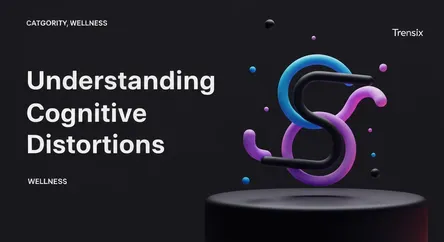Wellness
Understanding Cognitive Distortions

Learn about cognitive distortions, the common irrational thought patterns that negatively impact your view of reality and mental well-being.
What is it?
Cognitive distortions are internal mental filters that cause a person to perceive reality in an inaccurate, and usually negative, way. They are habitual errors in thinking that happen automatically, often without us realizing. These are not signs of a mental illness on their own, but rather common patterns that can affect anyone. Examples include "all-or-nothing thinking," where situations are seen in absolute black and white terms, and "catastrophizing," where you anticipate the worst possible outcome. These irrational thoughts are often developed over time as a way to cope with adverse life events.
Why is it trending?
The topic is gaining traction as public awareness of mental health and wellness grows. Cognitive distortions are a core concept in Cognitive Behavioral Therapy (CBT), a highly effective and widely practiced form of therapy. As people seek practical tools to manage their mental well-being, understanding and identifying these thought patterns has become a popular self-help strategy. Discussing cognitive distortions provides a clear framework for people to recognize how their thoughts impact their feelings and behaviors, empowering them to challenge and reframe negative thinking.
How does it affect people?
When consistently reinforced, cognitive distortions can have a significant negative impact on a person's life. They can increase feelings of anxiety, deepen depression, and create relationship difficulties by skewing perceptions of others' actions and intentions. These thought patterns can lead to low self-esteem, decreased motivation, and a persistent negative outlook. By misinterpreting events—such as personalizing blame for things outside one's control or disqualifying positive experiences—individuals can become trapped in a cycle of negative emotions that reinforces the distorted thinking.